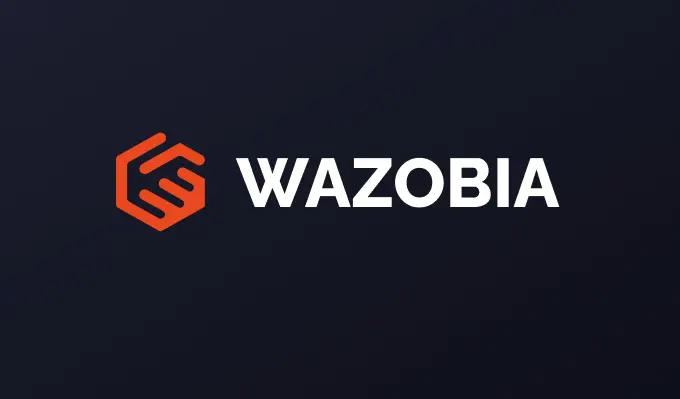Blog/Cloud Computing
Edge vs Cloud Computing: Comparison and Differences

Cloud computing has undoubtedly conquered the tech world, with companies big and small flocking to its centralized solution. Over 28% of IT budgets now fuel the cloud, and 70% of organizations have dipped their toes in, reaping its undeniable benefits. Cloud engineer roles are hotter than ever, thanks to this skyrocketing demand.
But even as the business needs and competitive field broaden, Edge computing emerges as a solution potentially as powerful as cloud computing. With its decentralized approach, promising lightning-fast processing and offline functionality, it is gaining ground and popularity. This article explores cloud computing and edge computing, through their definitions, comparison, benefits and use cases.
Outline
- Introduction
- What is Cloud Computing?
- Benefits of Cloud Computing
- What Is Edge Computing?
- Benefits of Edge Computing
- When to Use Edge Computing vs. Cloud Computing?
- Hybrid Cloud Architecture
- Conclusion
What Is Cloud Computing?
Cloud computing is a technology that allows users to access and use various computing resources and services over the Internet. It involves delivering computing services, such as servers, storage, databases, networking, software, and analytics, to users on demand.
Instead of relying on local servers or personal devices, cloud computing enables users to store and process data in remote data centres. These data centres are maintained and controlled by cloud service providers. The service provider relies on a network of remote servers to deliver services over the Internet. When users require computing resources, they connect to the cloud, and the cloud provider dynamically allocates and delivers the necessary resources.
This model enables users to access applications, storage, and processing power without needing on-premises infrastructure. Users can access their data and applications from anywhere with an internet connection, using a wide range of devices like computers, smartphones, or tablets.
What Are the Benefits of Cloud Computing?
Ease of Access: Cloud computing allows users to access data and applications from anywhere with an internet connection.
Cost Efficiency: Organizations can avoid the upfront costs of owning and maintaining hardware, leading to significant cost savings.
Reliability: Cloud providers host data across multiple data centres, ensuring applications remain available even in the event of hardware failure.
Scalability: Cloud services can scale up or down based on demand, providing flexibility to accommodate changing workloads.
What Is Edge Computing?
Edge computing is a way of processing data closer to where it is generated, rather than sending it to a centralized data center or the cloud for processing. This brings enterprise applications closer to data sources such as IoT devices or local edge servers. This proximity to data at its source can deliver strong business benefits, including faster insights, improved response times and better bandwidth availability.
For example, edge computing can be used in connected vehicles to analyze data from sensors in real-time, enabling the vehicle to make decisions faster and more accurately
Edge computing is an architecture rather than a specific technology. It is increasingly being used in various industries, such as IoT, autonomous vehicles, smart cities, and industrial automation, among others. Edge devices process data locally, minimizing the need for extensive data transfer to centralized servers.
What Are the Benefits of Edge Computing?
Low Latency: Edge computing processes data closer to its source, reducing the time it takes to transmit data and receive responses.
Bandwidth Optimization: By processing data locally, edge computing minimizes the need for extensive data transfer, optimizing network bandwidth.
Improved Reliability: Some edge-based applications can continue to run even if the network connection is compromised, ensuring offline operation.
When should you use edge computing vs. cloud computing?
Choosing between cloud computing and edge computing depends on several factors, such as the type of application, the amount and frequency of data, the quality of service, the budget, and the user preferences. In some cases, a hybrid approach that combines both cloud and edge computing may be the best option, as it can offer the benefits of both paradigms while mitigating their drawbacks. We break down the ideal scenarios decide when to use which below:
When to use Edge Computing
Need Things to Happen Right Now
When: You're working with applications that need things to happen super fast, like cool virtual reality stuff.
Why: Edge computing makes things happen quickly by doing the work close to where it's needed, so there's no waiting around.
Away from Good Internet
When: You're in a place where the internet is not so great or even nonexistent.
Why: Edge computing doesn't rely on a strong internet connection, making it perfect for places with not-so-great internet.
Dealing with Big Batches of Data
When: You're handling really big sets of data that could cost a lot to process.
Why: Edge computing can process data locally, saving money by not sending everything to far-away servers.
Super Secret Data
When: You're working with data that's super secret and needs extra protection.
Why: Edge computing lets you keep sensitive data close by, away from prying eyes, making it more secure.
When to use Cloud Computing
Not in a Hurry
When: Your applications don't need to happen right this second.
Why: Cloud computing is great for things that don't need to be lightning fast, offering flexibility and easy access.
Good Internet All Around
When: You've got a reliable internet connection.
Why: Cloud computing needs a good internet connection, so if you've got one, it works like a charm.
Changing Workloads
When: Your workload goes up and down a lot.
Why: Cloud computing can handle changes in how much work you have, scaling up or down as needed.
Safe Storage
When: You want a safe place to store your data.
Why: Cloud computing has strong security features, making it a good choice for storing and managing data securely.
Hybrid Cloud Architecture
In many scenarios, a hybrid cloud architecture, combining elements of both edge and cloud computing, proves to be the most effective approach. It is a tailored combination of on-premises or private cloud infrastructure and public cloud services. This arrangement allows organizations to optimize bandwidth, response times, and overall efficiency by strategically integrating edge and cloud computing technologies to cater to diverse data service needs.
Benefits of Hybrid Cloud Architecture
Scalability and Flexibility
On-Premises: Private cloud offers control and security for sensitive data and applications.
Public Cloud: Scales resources dynamically based on demand.
Cost Efficiency
On-Premises: Capitalizes on existing infrastructure, reducing upfront costs.
Public Cloud: Provides a pay-as-you-go model, optimizing costs.
Data Security and Compliance
On-Premises: Ensures control over sensitive data, meeting compliance standards.
Public Cloud: Adheres to robust security measures offered by leading cloud providers.
Performance Optimization
On-Premises: Ideal for workloads requiring low latency and high performance.
Public Cloud: Suitable for scalable and less sensitive workloads.
Conclusion
Understanding the unique strengths of each paradigm and knowing when to leverage them ensures that organizations can reap the ful benefits of these technologies for an efficient, and agile IT infrastructure.
Cloud computing serves as a spacious digital storage accessible from anywhere, ideal for extensive data storage and collaborative tasks. On the other hand, edge computing, positioned closer to the ground, excels in tasks demanding swift data processing and real-time responses.
Whether opting for the cloud, embracing edge computing, or finding the optimal balance in a hybrid approach, navigating these technologies potentially ensures a seamless and effective computing experience.
Related post
Recent Posts
Need help with a project?
© Wazobia Technologies 2025
Powered by:



.jpg_xZXBLo?tr=w-1500,cr-0.0.1500.840)
